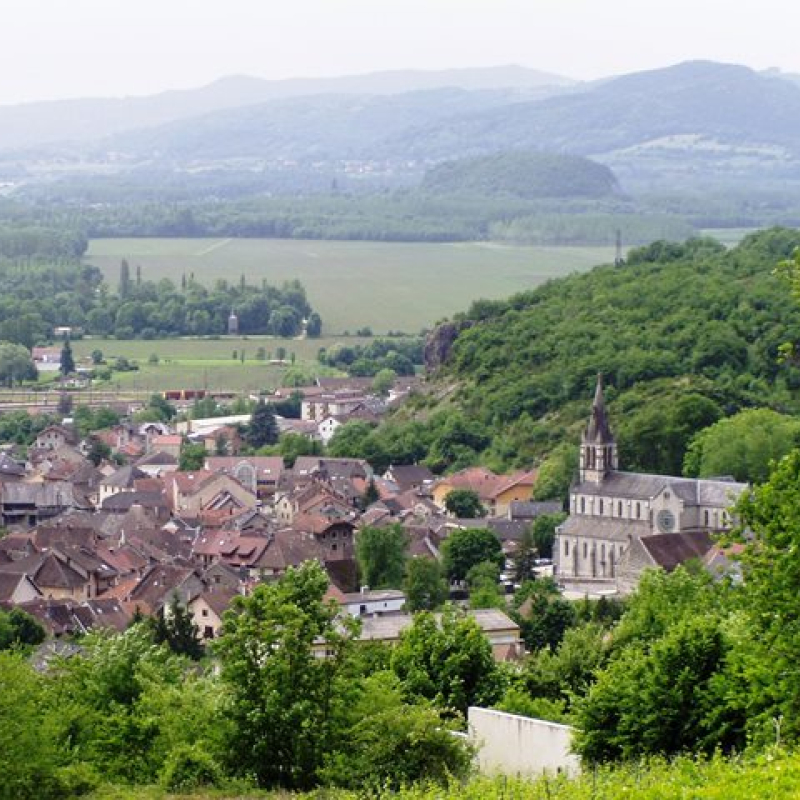Heritage of the commune of Culoz
Ain ()

Two burials dating from the Mesolithic period attest to the occupation of the site from 7000 BC. Remains from the Roman period have also been discovered in the commune.
In the Middle Ages, Culoz, like the whole of Bugey, was under the domination of the House of Savoy until the Treaty of Lyon in 1601.
The main resource of the people of Culoz was the vine.
In the 19th century, Culoz became an important railway centre, thanks to the construction of a railway bridge over the Rhône in 1858.
The town developed from 1950 onwards, under the impetus of CIAT, a large air conditioning company.
The Grand Colombier, the highest peak in the Bugey region (1531 m), offers the possibility of numerous hikes and bike rides.
The Maison du Patrimoine: this 14th century building, the rectorie Saint-Antoine, is the place of memory of the Culoziens. It contains a large number of objects from archaeological excavations, from daily life or from the illustrious people who have lived in Culoz: the Serpollet brothers, precursors of the automobile, Henry Dunant, founder of the Red Cross, the American writer Gertrude Stein and more recently Christophe Lemaître, a local boy.
The Montvéran castle: built on the rock of Montvéran by Pierre de Luyrieu in 1316, this castle has seen many personalities stay within its walls: the Constable of Bourbon, Serge Prokofiev in 1928-29 or Henriette d'Angeville.
The Clos Poncet, its bourgeois house and its park, a former wine cellar, developed in 1895 by Antonin Poncet.
The chapel in the old cemetery is the choir of the old church.
The Mollard Jugeant offers a breathtaking view of the Lavours marshes and the Bugey mountains. The Mollard Jugeant has been the subject of archaeological excavations by INRAP. The Levannaz stone is an erratic block of 70 tons deposited by the glaciers.
The 7 stone sculptures evoking the Gates of the Year 2000 were created during the 1999 and 2000 sculpture meetings. These works are part of the Chemins de la Pierre en Bugey.
Ain (1)
Ça peut vous intéresser

Yoga and hiking on Grand Colombier

Restaurant and take-away “Au Campagnard Autrement”

Rest’O du commerce

Mini-Golf at Camping Le Colombier









